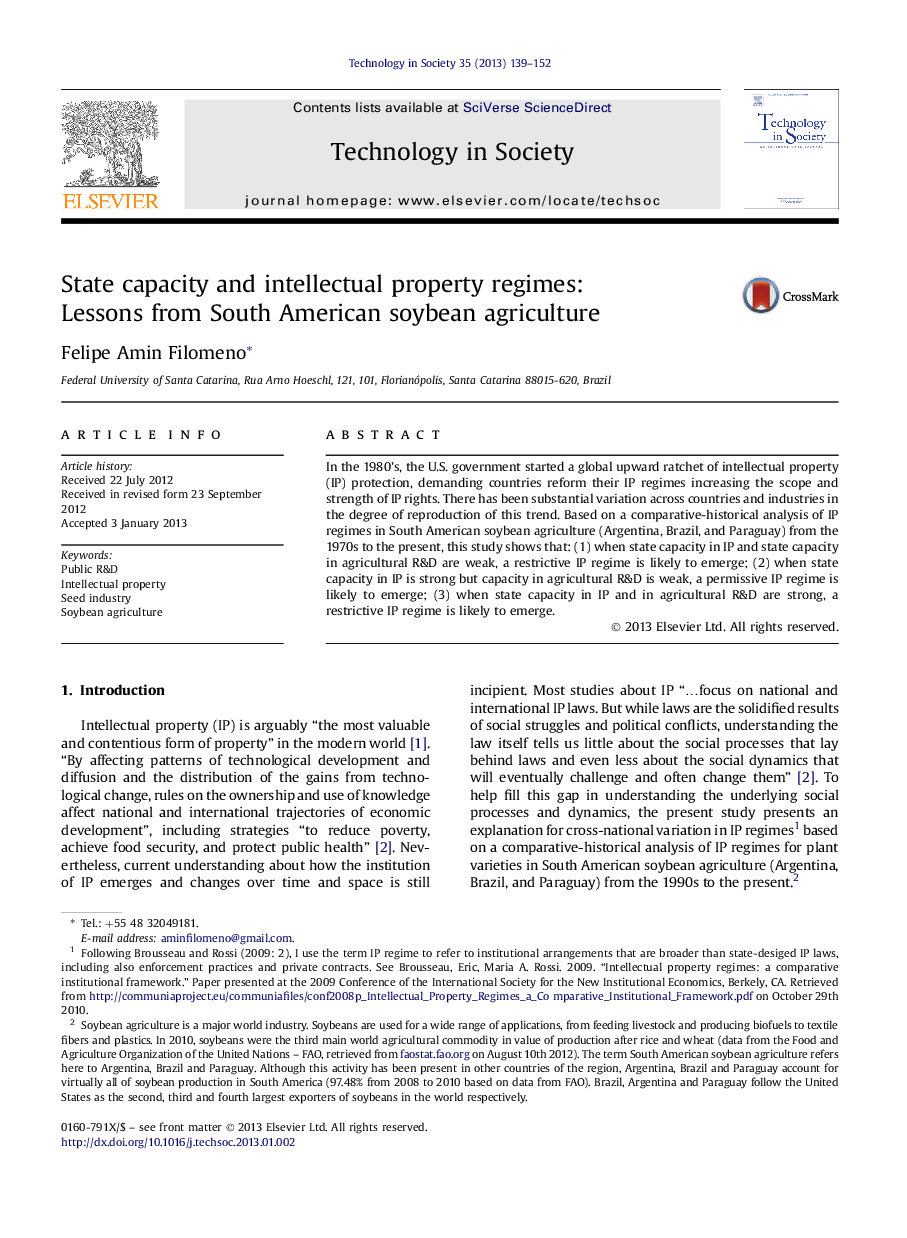| Article ID | Journal | Published Year | Pages | File Type |
|---|---|---|---|---|
| 375262 | Technology in Society | 2013 | 14 Pages |
In the 1980's, the U.S. government started a global upward ratchet of intellectual property (IP) protection, demanding countries reform their IP regimes increasing the scope and strength of IP rights. There has been substantial variation across countries and industries in the degree of reproduction of this trend. Based on a comparative-historical analysis of IP regimes in South American soybean agriculture (Argentina, Brazil, and Paraguay) from the 1970s to the present, this study shows that: (1) when state capacity in IP and state capacity in agricultural R&D are weak, a restrictive IP regime is likely to emerge; (2) when state capacity in IP is strong but capacity in agricultural R&D is weak, a permissive IP regime is likely to emerge; (3) when state capacity in IP and in agricultural R&D are strong, a restrictive IP regime is likely to emerge.
► I compare intellectual property regimes on seeds in Argentina, Brazil and Paraguay. ► State capacity in intellectual property affects intellectual property regimes. ► State capacity in R&D affects intellectual property regimes.
